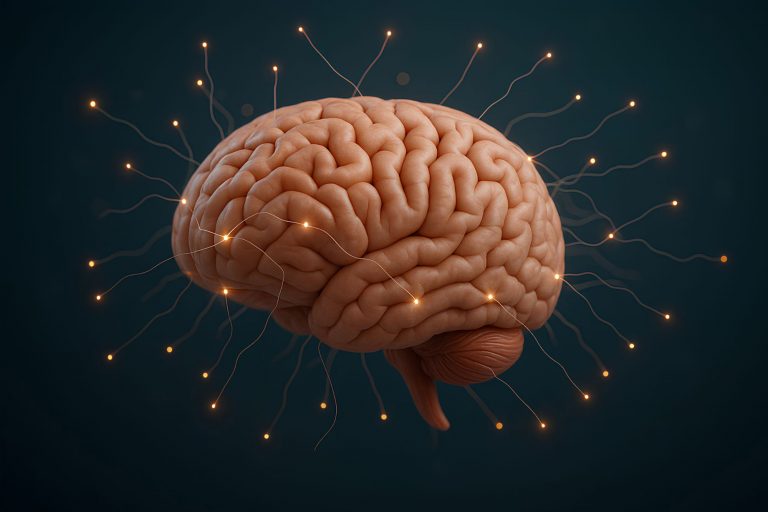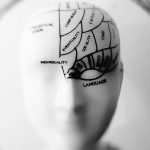Want to hear about one of the most innovative breakthroughs in brain health treatment?
The wellness industry is rapidly evolving and the days of “nothing else works” are slowly coming to an end. With the development of transcranial magnetic stimulation therapy (TMS), people who have struggled with depression for years are finally getting a chance to live their lives again.
The best part is that it works by simply using magnetic pulses to treat specific regions of the brain. It’s non-invasive which means there’s no surgery, no hospital recovery and the results have been quite promising for many.
It can be a great option for people who feel like they don’t have many treatment choices left.
If you’re still unsure whether this kind of treatment is right for you, then here are some critical pieces of information about it that might clear your mind about everything.
Transcranial Magnetic Stimulation Therapy Revealed
- What Makes TMS Different From Traditional Treatments?
- The Science Behind Magnetic Brain Stimulation
- Real Success Rates and Patient Outcomes
- Who Should Consider This Treatment?
- The Future of Brain Health Technology
What Makes TMS Different From Traditional Treatments?
TMS therapy is different from anything you’ve tried before because instead of dousing your entire body with chemicals, TMS therapy in Phoenix and other wellness centers use the magnetic coils to stimulate the prefrontal cortex directly.
If you think about your brain as a system of electrical circuits, when you’re dealing with depression, specific circuits are having issues. When you send magnetic pulses into the brain, it’s like hitting the “reboot” button on your computer.
The actual treatment process is pretty simple
All you do is sit in a chair and the technician places a magnetic coil on the side of your head. It then starts pulsating and you just sit there.
There’s no anesthesia, no surgical procedure and no waiting time for recovery. In fact, you can even drive yourself home immediately after the session is over.
Most sessions will take 20-30 minutes and your therapist will fit you in several of these per week.
The Science Behind Magnetic Brain Stimulation
Before we jump in further, here’s a little insider secret.
The TMS therapy industry is on a growth path.
According to the most recent studies, the global transcranial magnetic stimulation system market size was worth $1.38 billion in 2024. Forecasts state that the value will reach 3.12 billion in 2034 with a CAGR of 7.34% throughout the projected timeframe.
Why’s it such a growth market?
Because it works.
Depression is a condition that’s linked to lower activity in the prefrontal cortex of the brain. This area of the brain is in charge of handling a variety of tasks that influence mood, motivation, decision-making, concentration, and many other mental functions.
TMS works by using electromagnetic induction which creates small electrical currents in a localized area of the brain. These electric currents are said to stimulate your neurons to help kickstart normal brain activity patterns.
The Breakdown of Treatment
Your initial treatment session will involve a mapping process. During this mapping stage, the tech will measure your head and pinpoint the precise location on your skull where your motor cortex responds to magnetic stimulation.
Once the mapping process is over, it’s time to start the actual treatment.
- Daily treatment sessions for 4-6 weeks (20-30 minutes a session)
- You’re awake the entire time and have no downtime
- You can read, listen to music, or just relax
- Some people feel better within the first week, others take longer
Real Success Rates and Patient Outcomes
Are you ready for the big reveal?
Approximately 50-60% of the patients end up experiencing an improvement in symptoms with about 30-35% reporting that they end up in full remission. This means that the symptoms of depression disappear.
Compare this to antidepressants, which work for only 27.5% of people diagnosed with treatment-resistant depression. After the 4th medication, the antidepressants have a success rate of just under 7%.
This is what makes the treatment so promising.
People who have failed to respond to traditional antidepressants have seen remarkable improvement in just a few weeks’ time.
But here’s what really matters…
The treatment has lasting effects. Many patients end up seeing benefits for 6-12 months or more. If symptoms return, a course of maintenance sessions can help to keep depression at bay.
The Best Candidates
Clinical studies have shown that the treatment has a positive effect on all age groups of people including:
- Adults with treatment-resistant depression
- Teens and young adults (15-21) who have not had success with traditional treatment methods
- The elderly population who are suffering from late-onset depression
- People with side effect intolerance
The treatment is FDA approved for major depressive disorder and obsessive-compulsive disorder. Research is also underway to test it for anxiety disorders, PTSD, and even some neurological diseases.
Who Should Consider This Treatment?
If you have…
Been cycling through multiple antidepressants and not seen results
If you’ve been on several medications and still feel hopeless, TMS offers a completely different route to treatment.
Can’t stand side effects from antidepressants
Weight gain, sexual dysfunction, nausea, sleep issues, dry mouth. If you’re dealing with these and more, it’s time for a different approach. With TMS, you don’t have to deal with this. You take your pills and suffer the side effects, or you get targeted treatment with TMS.
Want a non-invasive treatment method
Want to get better without surgery, hospitalization, and recovery? This is your method.
There are some contraindications, however. If you have metal implants on or in your head, a history of seizures, or certain medical devices (like a pacemaker), TMS may not be right for you.
Talk to your doctor and they’ll do a screening to make sure it’s right for you.
Treatment Experience
In the majority of cases, people say that TMS is quite comfortable. You hear a clicking sound and feel a tapping sensation on your scalp. Some people find it a bit annoying at first, but most people get used to it after a while.
In terms of commitment, there’s time involved. Daily sessions are the standard, Monday through Friday, for a few weeks. We’re talking around 20-30 appointments in total.
For people who are dealing with severe depression and can barely function, it’s worth the investment.
The Future of Brain Health Technology
This is where things get really exciting…
The wellness industry is evolving and traditional medicine is giving way to more personalized care. We’re moving away from a one-pill-fits-all kind of care and moving towards a targeted healing model.
TMS is part of that shift. Instead of popping a daily pill to manage our symptoms, we can actually help the brain heal itself.
Protocols are also being developed to make treatment more effective. Accelerated TMS treatment compresses treatment into a week (just 5 days). Sessions are longer and there are multiple sessions in a day. Some clinics have reported response rates up to 86% using this kind of intensive protocol.
Research is also branching out into other applications for the therapy including:
- Chronic pain management
- Addiction treatment
- Cognitive enhancement
- Stroke recovery
The technology is only going to get better and more people are going to have access to it.
Wrapping It Up
Depression and other brain disorders are nothing to take lightly. For people who have struggled with this, it’s a source of hope.
We know that the transcranial magnetic stimulation therapy market is going to be growing over the next decade. The technology is accessible and it works.
If you’ve been trying to cope with depression without any success, TMS is a promising option for you to consider.
The results are real, the science is proven and the treatment is FDA-approved. It has the highest rate of success out of any antidepressant on the market and it has a safety record that most pharmaceuticals can’t even come close to matching.
The future of brain health is here and it’s going to change the lives of people all over the world.






Comments are closed.